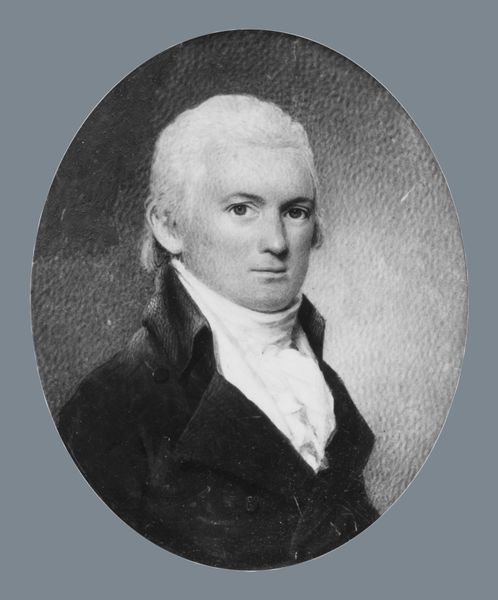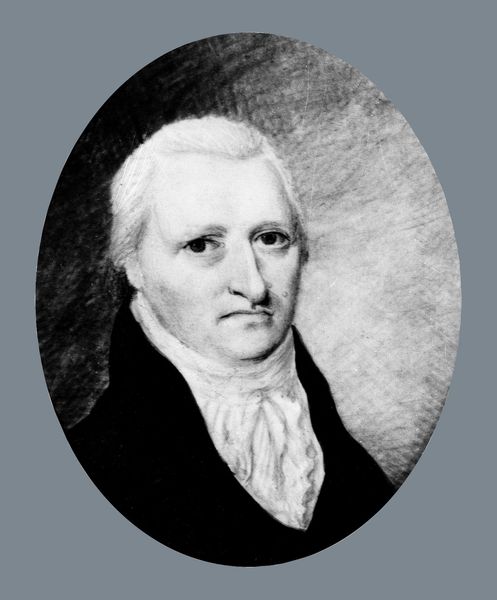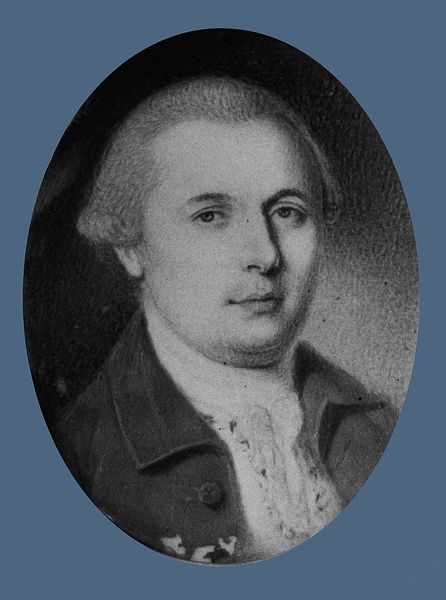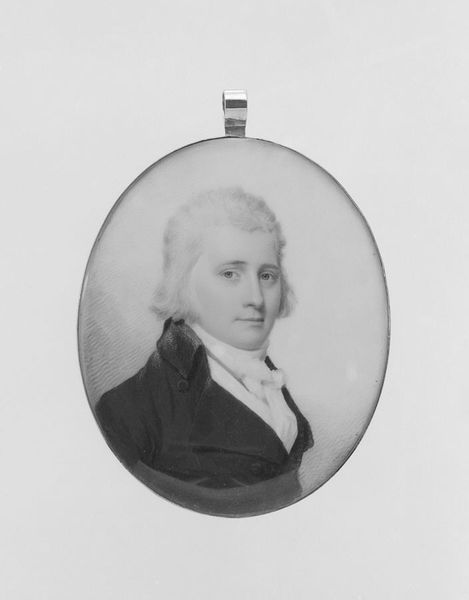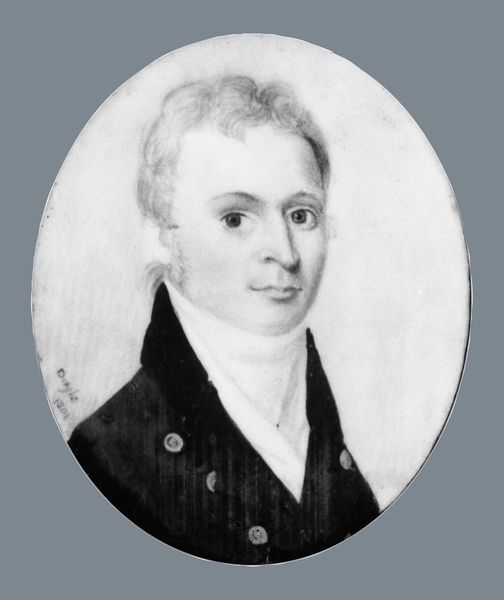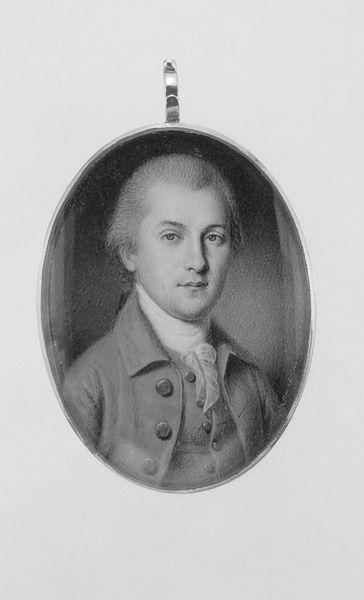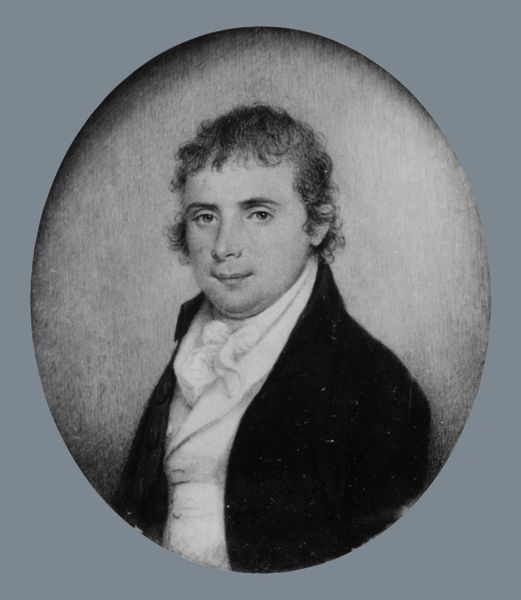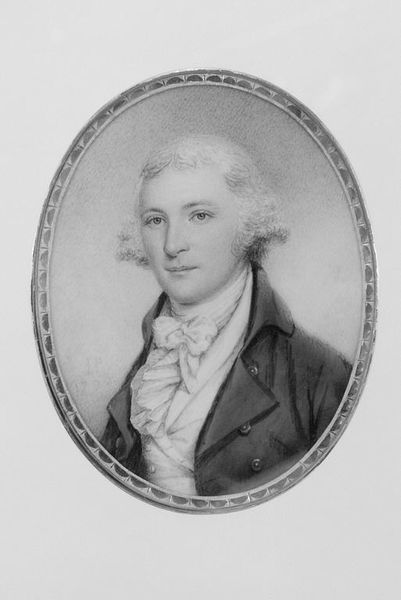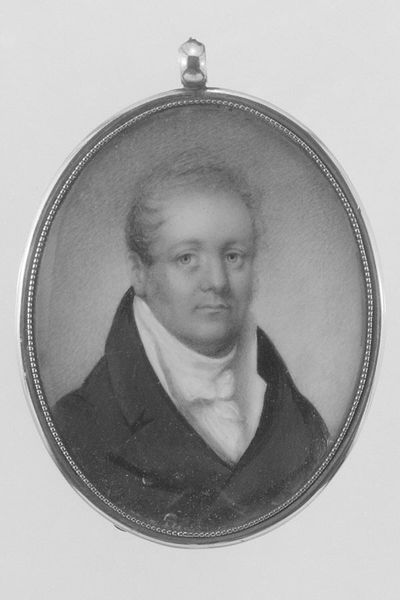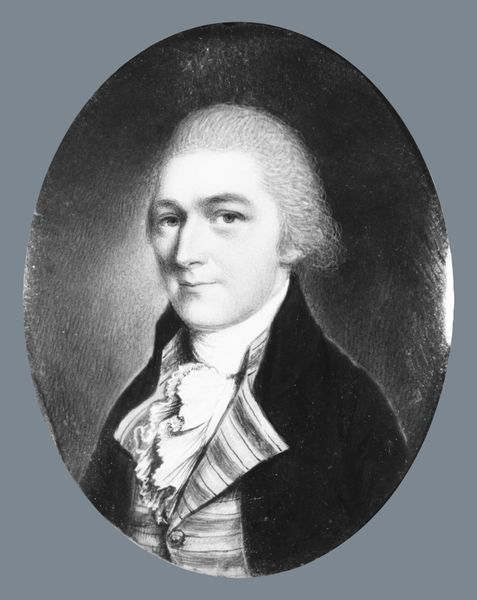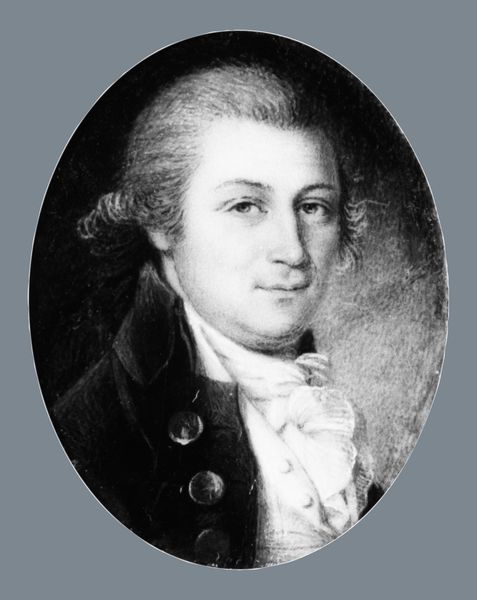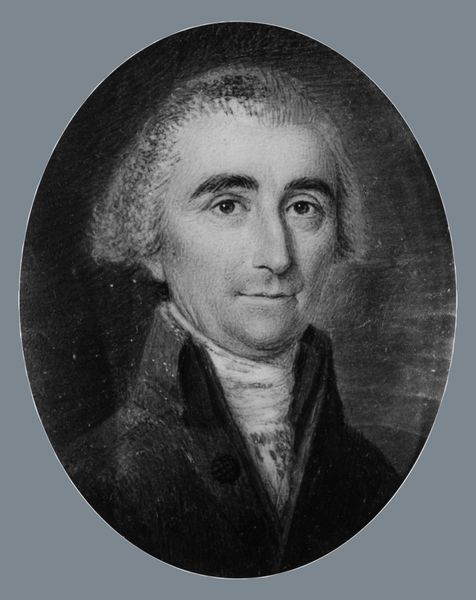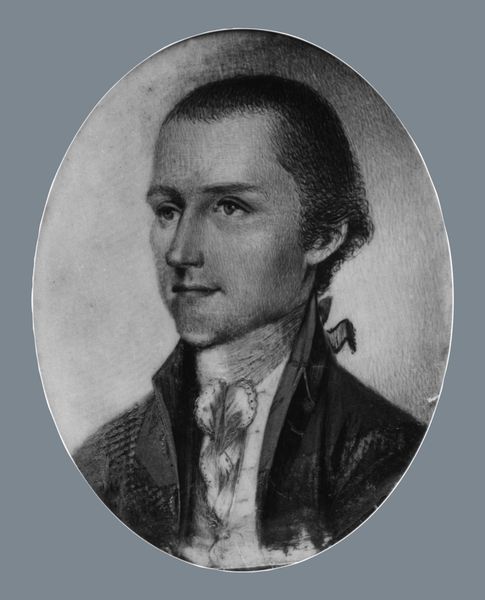
#
portrait
#
neoclacissism
#
portrait image
#
portrait
#
portrait reference
#
portrait head and shoulder
#
framed image
#
men
#
facial portrait
#
portrait art
#
miniature
#
fine art portrait
#
celebrity portrait
#
digital portrait
Dimensions: 2 7/8 x 2 1/4 in. (7.2 x 5.7 cm)
Copyright: Public Domain
Editor: This is James Peale's portrait of Francis Depau, made in 1802. It’s striking how small and intimate the painting feels. What do you see in this piece? Curator: Well, beyond the Neoclassical style and formal composition typical of the period, I see a tension. While seemingly straightforward, portraits like these often reveal much about the subject's social positioning and the artist's own embeddedness in that social fabric. Have you considered how Depau's identity as a merchant, his whiteness, and presumed wealth are being communicated here? Editor: Not really. I guess I was focused on the way it was painted. I can see that now. What does his being a merchant suggest? Curator: In the early 19th century, merchants played a pivotal role in shaping global economies, often profiting from exploitative labor practices. This portrait, therefore, isn't just a depiction of an individual; it's a reflection of a system. The artist's choice to depict Depau in this manner can be read as an endorsement or, at least, a normalization of that system. Editor: So, the painting's style, which seems neutral, actually hides a political statement? Curator: Precisely. And the absence of explicit indicators of Depau's profession only reinforces the pervasiveness of his social standing. What we don’t see becomes as crucial as what we do see. What does it mean when privilege is rendered invisible, presented as simply the natural order of things? Editor: That's given me a lot to think about. I came in seeing just a portrait, but I leave understanding a statement about society. Curator: Absolutely, and it reveals a little something about the social mores of portraiture, too. There are no simple readings, just deeper questions.
Comments
No comments
Be the first to comment and join the conversation on the ultimate creative platform.
